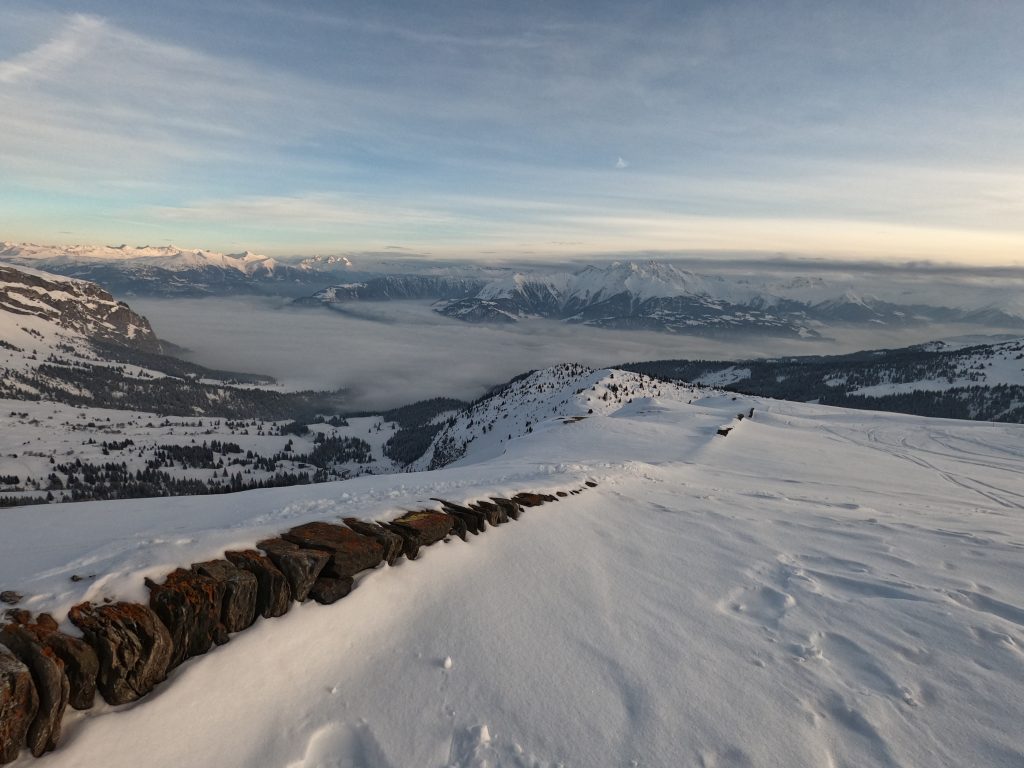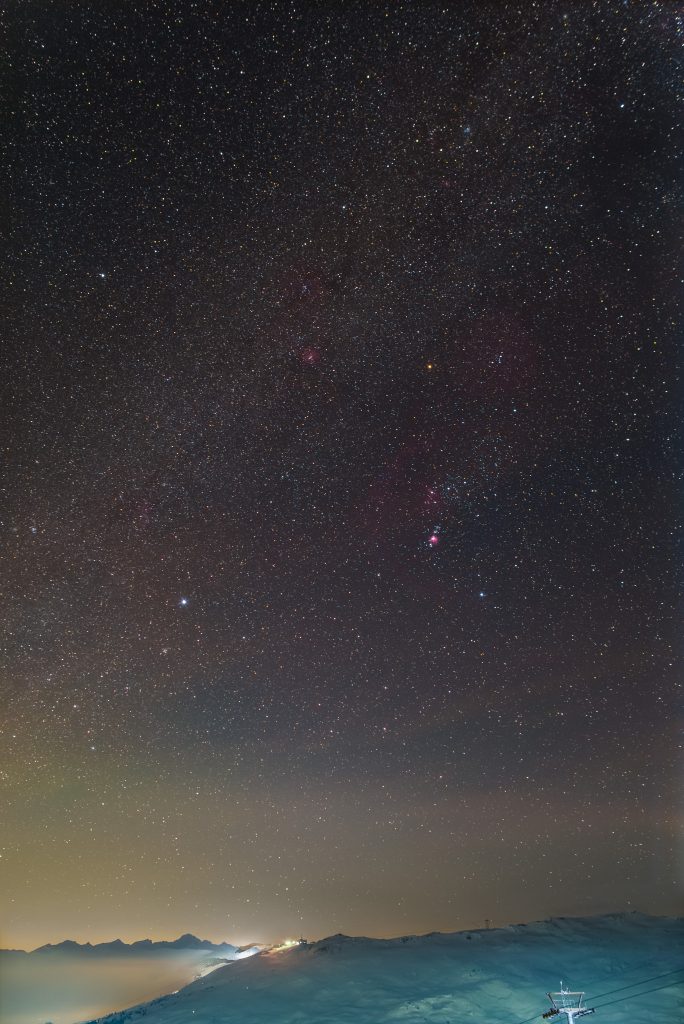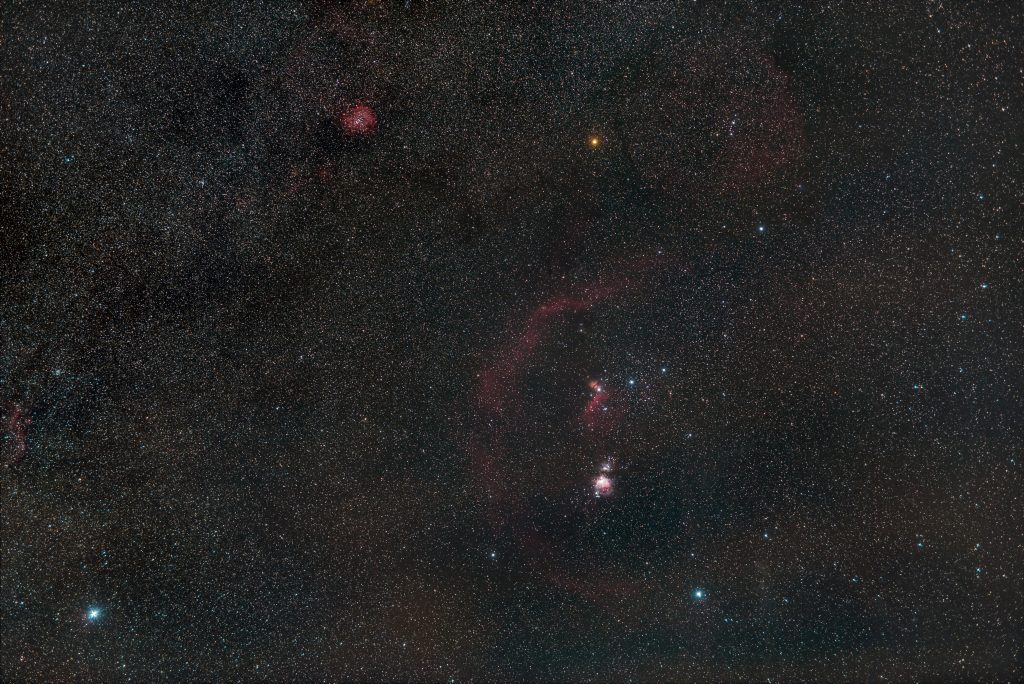I got a fantastic idea to combine our ski vacation with chasing darkness and creating some spectacular wide-angle astrophotography. I started to search for a hotel, preferably at the top of the mountain, where would be very low light pollution. I found one – Berghaus Nagens in ski resort Flims-Laax. According to the light pollution map, there should be ideal conditions given by the altitude 2000 meters above the sea level, leaving the bright villages in the valley. The hotel has a south-oriented terrace, which should be also optimal to capture the most interesting deep space objects. I knew that to take even the portable telescope together with ski equipment is not feasible, so I took just an astro-modified Canon EOS 6D, two lenses, a tripod, and a portable mount. During our trip to Kythira, I used Baader Nanotracker, which did the job, but I was struggling a lot with polar alignment, so I decided on an upgrade. Specifically, I purchased iOptron Skyguider Pro. It is still very portable, but almost like a real equatorial mount with integrated polar scope.
So, I booked the hotel, packed ski, previously mentioned astro-equipment, and left for a couple of days towards a new experience. The arrival is quite strict – you have to be at the bottom gondola station between 15:00 and 15:30, to take the lift up. If you miss this gondola, you will not get up. Fortunately, we managed and even first evening we saw few stars in holes between the clouds. The next night the weather improved, but the clouds were still making serious astrophotography nearly impossible. Last two nights the sky cleared and even the Orion arm of the Milky Way was visible by the naked eye. I grabbed a sky quality meter and measured only 21.0, which is not that spectacular. The problem was not caused by the light from the hotel’s restaurant (they switched the lights off at 23:00), but the reason is that we were surrounded by slopes, which have to prepare and the Pistenbullys making the job done have extremely powerful headlights. I can imagine that as soon the ski season is over and the snow melts away, the conditions will be excellent. In the end, I took only two pictures 24 mm and 50 mm of the constellation Orion. Such poor performance can be explained by the extreme weather conditions (freezing -15°C) and my complete tiredness after the whole day of skiing. It’s definitely easier to spend a whole day on the beach and in the evening do some astrophotography because your body is charged by solar power.
Anyway, these few days were mainly about skiing and we enjoined that very much. I cannot imagine a better place for this purpose. One can simply put the ski on at 8:00 be alone on the very well-prepared slopes. Berghaus Nagens is therefore 100% recommendable.


Technical details:
| Lens | Samyang 24 mm f1.4 @ f2.8 |
| Camera | Canon EOS 6Da |
| Mount | iOptron Skyguider Pro |
| Exposure | 46x15s, ISO 1600 |
| Date | 2021-02-14 |

Technical details:
| Lens | Sigma 50 mm f1.4 Art@ f2.0 |
| Camera | Canon EOS 6Da |
| Mount | iOptron Skyguider Pro |
| Exposure | 44x30s, ISO 1600 |
| Date | 2021-02-13 |

Holy cow you’re in my country! I hope you like it!
I love it 🙂
[…] I was sick of this weather and decided to climb above the clouds and finally take some pictures. Like last year I chose Berghaus Nagens in Flims/Laax ski resort and combine this trip with a skiing vacation. So, […]